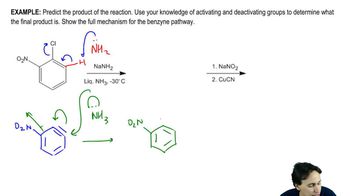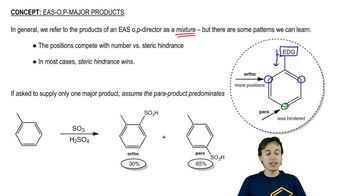Predict the major products formed when benzene reacts (just once) with the following reagents.
f. fuming sulfuric acid

 Verified step by step guidance
Verified step by step guidance Verified video answer for a similar problem:
Verified video answer for a similar problem:



 4:29m
4:29mMaster Activity and Directing Effects with a bite sized video explanation from Johnny
Start learning